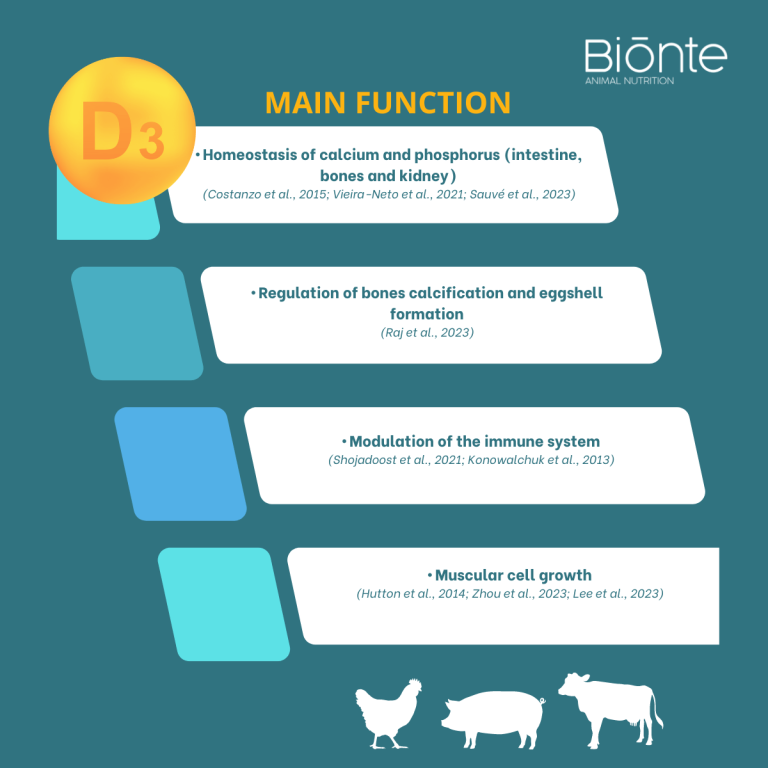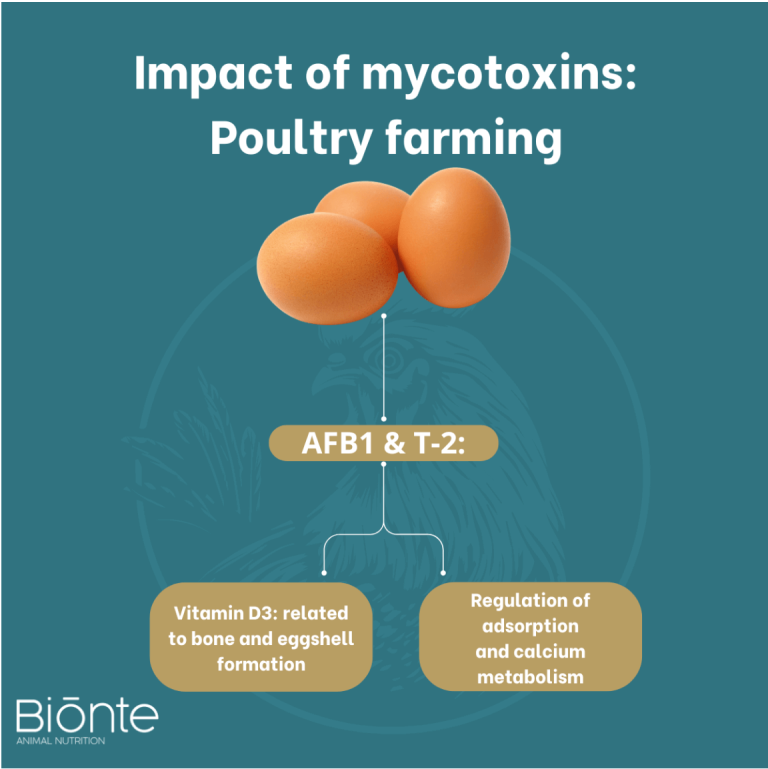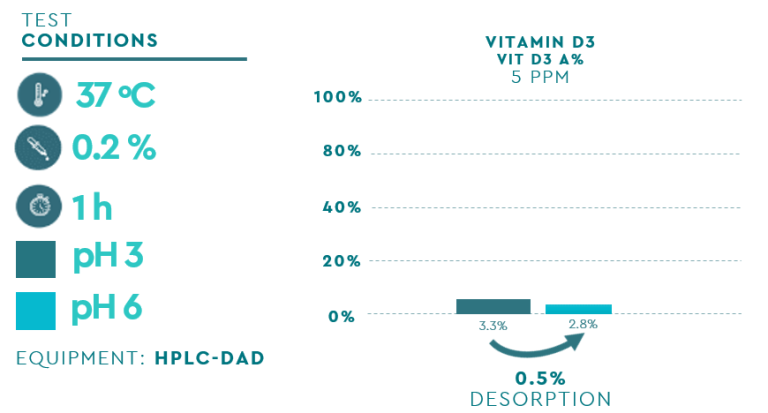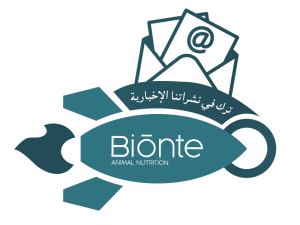One of the big challenges that every farm has to cope with is mycotoxins contamination, geographically widespread due to the concomitance of some mold growth factors, such as temperature, humidity, climate change and the wrong implementation of good agricultural and feed manufacturing practices (Moretti et al., 2019).
Economic and production losses are bound to happen on a farm where animal exposure to mycotoxins is high. Therefore, in 2009, the European Union (EU) authorized the application of mycotoxins detoxifying agents by introducing a new category of feed additives described as “substances capable of inhibiting or diminishing absorption, facilitating excretion, or altering the mode of action of mycotoxins” (EC, 2009). Nowadays, many anti-mycotoxins products have been developed, although in most cases their efficacy depends on the characteristics and affinity of the binder and the mycotoxin. In fact, the binder absorption capacity depends on the anionic-cationic interaction between the compound, the size and structure of the toxin (Vila-Donat et al., 2018).
However, even if an adsorbent material is highly effective against mycotoxins, a crucial point to consider is the selectivity of the binding ability. In fact, a good adsorbent material has to be efficient against toxins without altering the nutrients in the diet, such as amino acids and vitamins.
Vitamin D3: Key source in animal health and performance
Vitamins are essential nutrients with no caloric content and a significant biological activity. They are essential for maintaining metabolic functions and promoting growth. Despite their different chemical composition, they are broadly classified into two main groups: water-soluble and fat-soluble vitamins (López Picado et al., 2009).
Among fat-soluble vitamins, vitamin D plays a pivotal role in bone homeostasis. The most common forms of vitamin D are: ergocalciferol (vitamin D2) and cholecalciferol (vitamin D3; Figure 1). In animal nutrition vitamin D is quite important as it increases growth, egg production and quality, improves meat quality and the animal health (Stevens et al., 2021). (Figure 1).

Figure 1. Role of vitamin D3.
Vitamin D3 and mycotoxins:
Recent studies have shown how mycotoxins can induce several disorders, like liver damage, production of reactive oxygen species and interferences in bone health issues in broiler chickens (Paneru et al., 2024). This study revealed that broilers exposed to aflatoxin B1 (AFB1) suffers lameness and other bone disorders by impairing bone mineralization through the disruption of the vitamin D receptor and calcium and phosphorus transporters.
Furthermore, as vitamin D3 is involved in the regulation of the absorption and metabolism of calcium, it is also related to bone and eggshell formation. Feed contaminated with AFB1 and T-2 toxin have been shown to induce changes in eggshell quality, as both mycotoxins interfered with the absorption and metabolism of vitamin D3 (Raj et al., 2023). (Figure 2).

Figure 2. Mycotoxins impact in poultry farming.
BIŌNTE® QUIMITŌX® PLUS®: a specific anti-mycotoxins solution without adsorbing Vitamin D3
BIŌNTE® QUIMITŌX® PLUS® is an anti-mycotoxins solution with a triple action that includes adsorption, bioprotection and post-biotic effects. With the adsorbent material, the product contains natural extracts and a combination of selected yeasts which provides a bioprotective and post-biotic effect for the animals.
In the present trial, a lab model was developed to determine the in vitro adsorption rate of vitamin D3 in order to evaluate the selectivity of the anti-mycotoxins product BIŌNTE® QUIMITŌX® PLUS. The study simulated the gastrointestinal tract conditions and the selectivity was determined at pH 3 (simulating stomach conditions), and at pH 6 (simulating the intestine). High-performance liquid chromatography with photodiode-array detection (HPLC-DAD) was used for evaluation.
As shown in Figure 3, the results obtained indicate that the adsorption of vitamin D3 is very low by BIŌNTE® QUIMITŌX® PLUS.

Figure 3. Adsorption plot at pH3 and pH6 of vitamin D3 for BIŌNTE® QUIMITŌX® PLUS®. Conditions: 37°C, 1 h, 5 ppm. Dosage: 2 kg/T.
Conclusion
The tested product BIŌNTE® QUIMITŌX® PLUS showed noninterference with the absorption of the vitamin D3. The product contributes to the mitigation of mycotoxins negative effects, such as the bone health issue and eggshell formation, on animal status and performance, without impairing nutrient availability.



